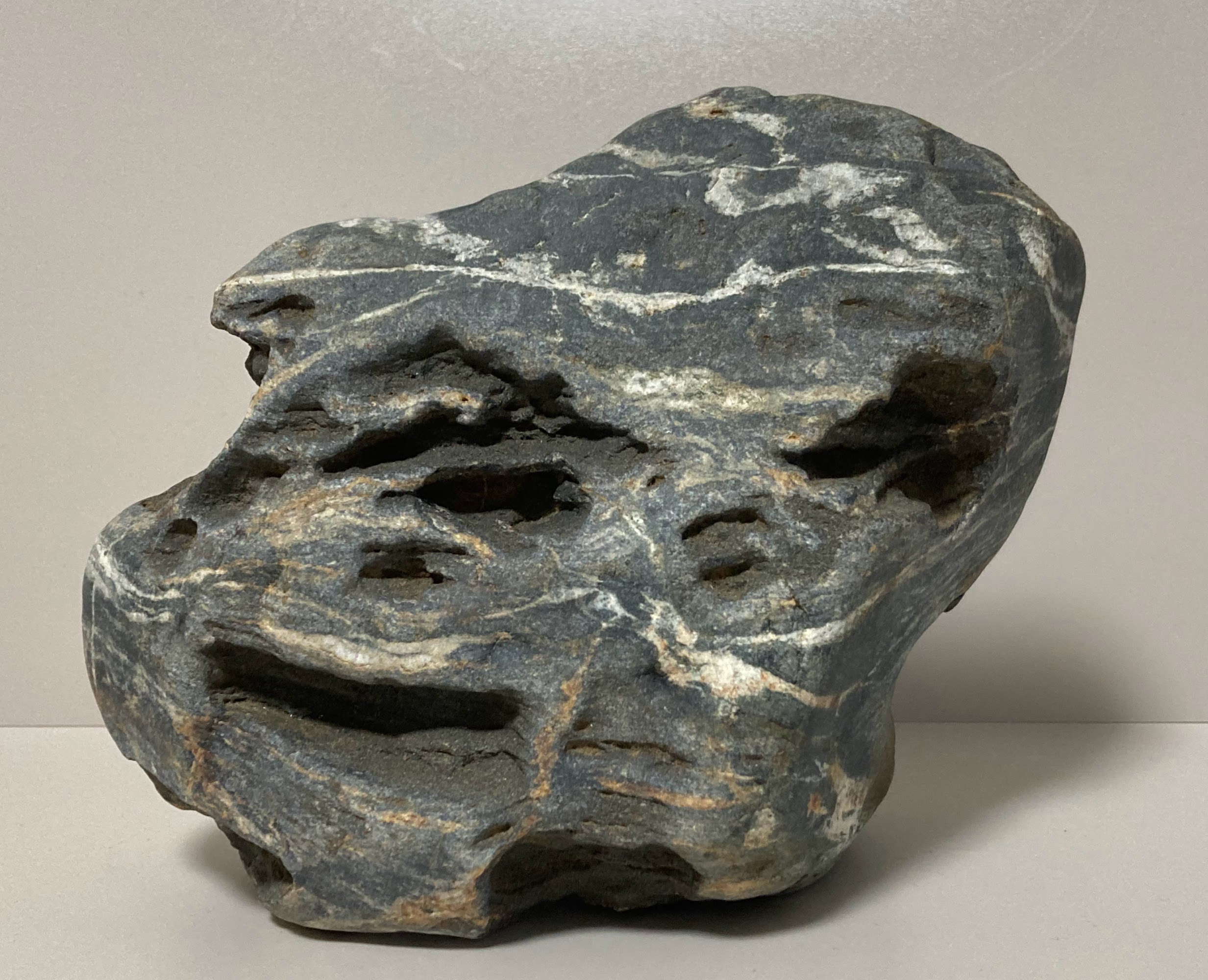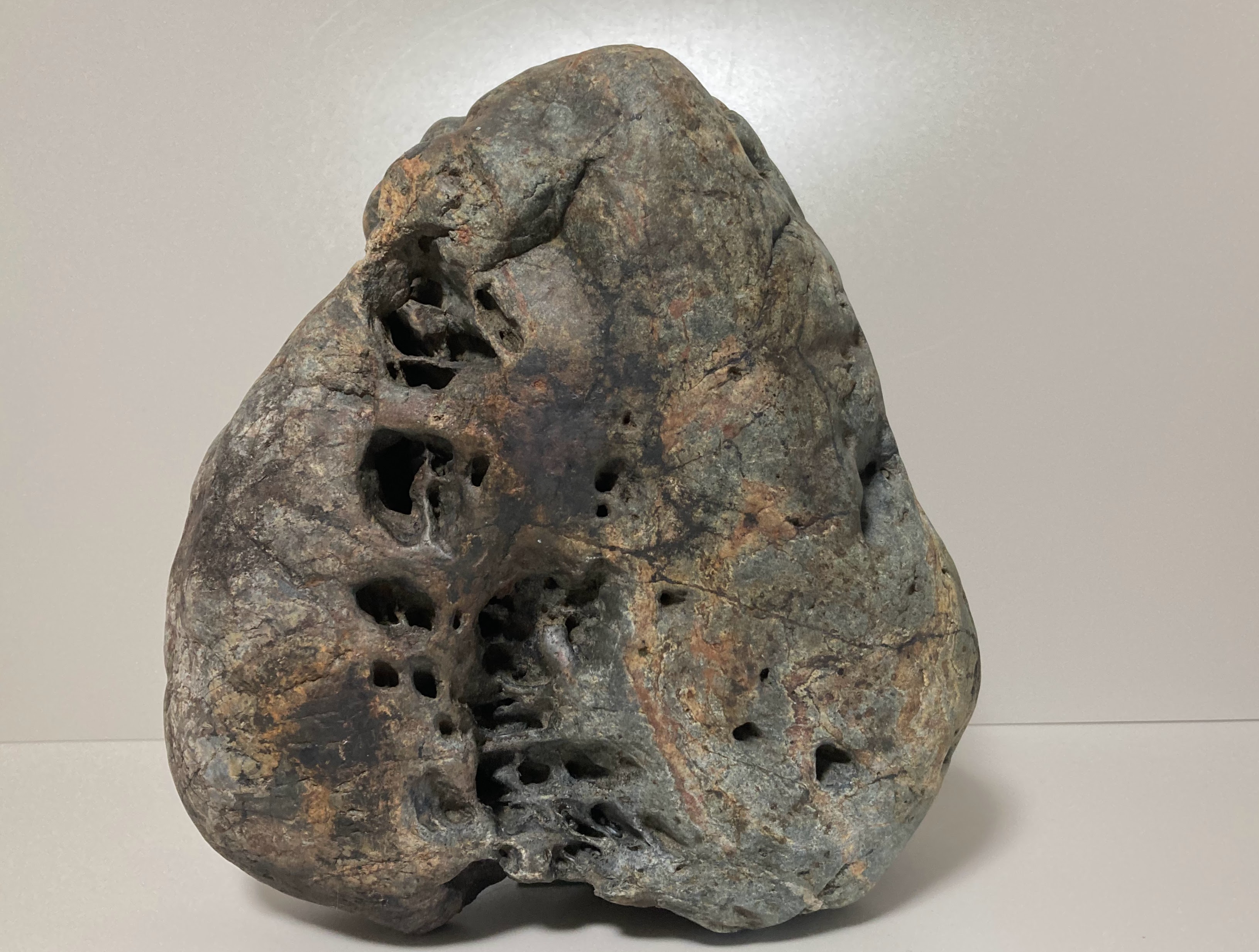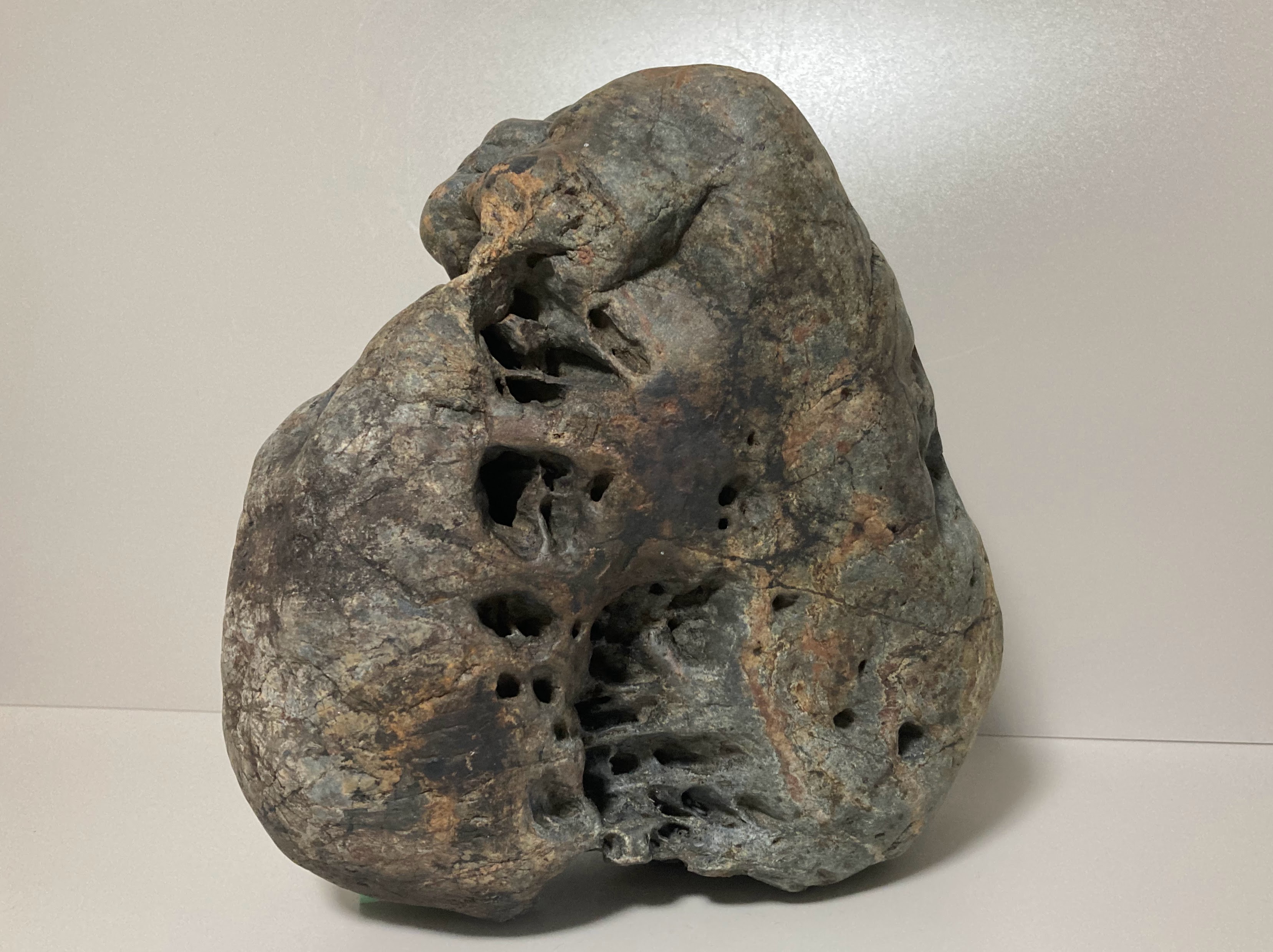Fujikawa-ishi-I, 富士川石
Fujikawa-ishi-I
Various types of stones can be seen in the Fujikawa, but there are some noteworthy suiseki stones.
In particular, Kokei-seki and Souryu-seki are dense and hard, with pronounced jagure patterns, and are just as attractive as other famous stones.
Another stone that stands out is Kinshu-seki, which is particularly hard.
There are two types of Kinshu-seki: blue Kinshu-seki and purple Kinshu-seki, but because they have shell-like fractures, they are thought to be similar to chert. Because of their hardness, they do not have any jagged edges, and most of them have simple shapes.
Fujikawa-ishi is not only of good quality, but also has names such as Kokei-seki, Souryu-seki, and Kinshu-seki that exude a sense of romance. The name was given by Yujiro Kanroji, author of "The World of Landscape Beauty."
Various other stones are also found in the Fujikawa, such as bamboo leaf stone, mugwort stone, and horseshoe stone.
Souryu-seki
It is no exaggeration to say that Souryu-seki is dense and hard, and is the representative Fujikawa-ishi for Suiseki stones.
Because it is hard, many of them have a somewhat monotonous shape, but they have a remarkable jaggedness and are very interesting to see.
The color is a deep blue that is truly worthy of the character "Sou, 蒼, blue", and the color becomes even more beautiful when water is poured on it. Compared to the blue hard outer skin, the somewhat soft parts are jagged, but these parts have a rough stone quality like sandstone and shine slightly.
It is thought that the jaggedness was created when an area where another mineral such as lime was once present was gouged out, making it a truly mysterious stone.
Kokei-seki
Kokei-seki is very similar to Souryu-seki, but it has thick stripes of white to brown patterns that remain like a skeleton, while the rest of the stone is jagged, making it look like Tora-ishi. It also differs from Souryu-seki in that it has an overall brownish color due to rust.
I have heard from local stone lovers that Kokei-seki is rarer than Souryu-seki, and that for every 20 Souryu-seki, you might find one Kokei-seki. On the other hand, the line between Kokei-seki and Souryu-seki is not clear, and it seems that people simply consider blue stones to be Souryu-seki and brownish stones to be Kokei-seki.
Probably, the basic stone is Souryu-seki, and Kokei-seki is one that rusts due to a certain cause.








